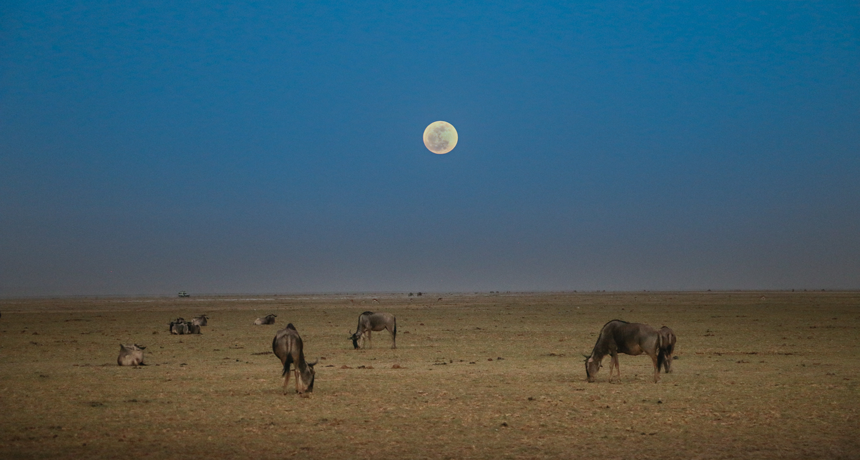Questions for ‘The moon has power over animals’

Moonlight affects animals in many different ways. Wildebeests (a herd shown) rely on moonlight to avoid nighttime attacks by hungry lions.
Karann Kalsey/iStock/Getty Images Plus
Come explore with us!

Moonlight affects animals in many different ways. Wildebeests (a herd shown) rely on moonlight to avoid nighttime attacks by hungry lions.
Karann Kalsey/iStock/Getty Images Plus
To accompany feature “The moon has power over animals”
1. What do you know about the moon?
2. How might the moon be important to life on Earth?
1. How does the story explain the crowds of people that regularly gather at night on some beaches in southern California? What does the moon have to do with it?
2. Scientists know that the moon’s gravitational pull can affect coastal creatures through its influence on tides. What important biological processes does recent research suggest moonlight affects?
3. What did ecologist Meredith Palmer discover about the relationship between lion prey and moonlight?
4. What is polarized moonlight?
5. What do some dung beetles use polarized moonlight for? How do they use it?
6. What did vision scientist James Foster find when he tested dung beetles’ ability to navigate over a lunar month?
7. According to the story, how does bright moonlight help some fish while potentially harming others?
8. What is a circadian rhythm?
9. How do changing seasons and changing levels of moonlight affect Arctic zooplankton’s circadian rhythms?
10. What did behavioral ecologist Jenny York learn about the relationship between Africa’s white-browed sparrow weavers’ singing habits and moonlight? What is one potential benefit of this behavior that York suggests?
1. What is light pollution, and what impacts does it have on animals’ relationship with moonlight? Can you think of some animals in your community that might be affected by light pollution?
2. Do you think the moon affects people like it does other animals? If so, how?
3. Give at least one additional environmental question that fish otoliths might be used to answer.
Register to access:
An error occurred. Please try again.
Already Registered? Enter your e-mail address above.